
|
You entered: Earth
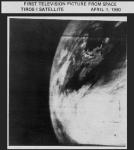 Planet Earth From TIROS 1: First TV Image
Planet Earth From TIROS 1: First TV Image
1.04.2000
The Television InfraRed Observational Satellite (TIROS) 1 was the first weather satellite. Launched into a polar orbit 40 years ago (April 1, 1960) equipped with two TV cameras, TIROS 1 was operational for only 78 days but demonstrated the feasibility of monitoring planet Earth's cloud cover and weather patterns from space.
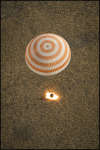 A Landing on Planet Earth
A Landing on Planet Earth
14.09.2013
With parachute deployed and retro-rockets blazing, this spacecraft landed on planet Earth on September 11 (UT) in a remote area near the town of Zhezkazgan, Kazakhstan. Seen in silhouette against the rockets' glare, the spacecraft is a Soyuz TMA-08M.
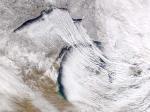 Lake Effect Snow on Earth
Lake Effect Snow on Earth
30.11.2004
What are those strange clouds stretching out from these lakes? The clouds are caused by cold air moving over a warm water and result in bands of lake-effect snow. The rising bands of moistened, warmed air that drop lake-effect snow alternate with clear bands of falling cold air.
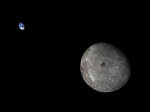 Moon and Earth from Chang e 5 T1
Moon and Earth from Chang e 5 T1
3.11.2014
Described at times as a big blue marble, from some vantage points Earth looks more like a small blue marble. Such was the case in this iconic image of the Earth and Moon system taken by the Chang'e 5-T1 mission last week.
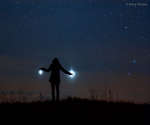 Jupiter and Venus from Earth
Jupiter and Venus from Earth
25.10.2015
It was visible around the world. The sunset conjunction of Jupiter and Venus in 2012 was visible almost no matter where you lived on Earth. Anyone on the planet with a clear western horizon at sunset could see them.
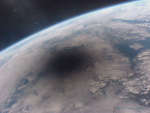 APOD: 2024 March 24 Б Looking Back at an Eclipsed Earth
APOD: 2024 March 24 Б Looking Back at an Eclipsed Earth
24.03.2024
Here is what the Earth looks like during a solar eclipse. The shadow of the Moon can be seen darkening part of Earth. This shadow moved across the Earth at nearly 2000 kilometers per hour.
 Jupiter and Venus from Earth
Jupiter and Venus from Earth
17.08.2014
It was visible around the world. The sunset conjunction of Jupiter and Venus in 2012 was visible almost no matter where you lived on Earth. Anyone on the planet with a clear western horizon at sunset could see them.
 Comet Wirtanen Passes by the Earth
Comet Wirtanen Passes by the Earth
16.12.2018
Today Comet Wirtanen passes by the Earth. The kilometer-sized dirty snowball orbits the Sun every 5.4 years, ranging as far out as Jupiter and as close in as the Earth. Today Comet 46P/Wirtanen passes within only 31 lunar distances to the Earth, the closest approach in 70 years.
 Saturn from Earth
Saturn from Earth
2.09.1998
Saturn is the second largest planet in our Solar System. Saturn has been easily visible in the sky since history has been recorded. Galileo used one of the first telescopes in 1610 to discover Saturn's rings, which he first thought were moons.
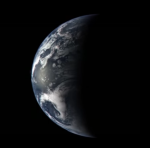 Leaving Earth
Leaving Earth
25.08.2019
What it would look like to leave planet Earth? Such an event was recorded visually in great detail by the MESSENGER spacecraft as it swung back past the Earth, eight years ago, on its way in toward the planet Mercury. Earth can be seen rotating in this time-lapse video, as it recedes into the distance.
|
January February March |
||||||||||||||||||||||||||||||||||||||||||||||||||||||||